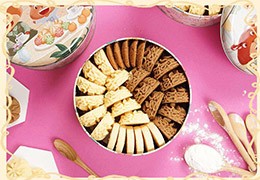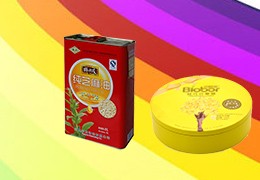As a professional...
What should be paid attention to when customizing printed mini tin box packaging
Customized printed mini tin box packaging needs to pay attention to the following aspects:
1. Design:
Pattern design:
Make sure that the pattern is related to the brand or product theme, is unique and meets the aesthetics and needs of the target audience, so that it can stand out from many packages and attract consumers' attention.
Pay attention to the resolution and clarity of the pattern. Low-resolution images may appear blurred and distorted after printing, affecting the overall effect of the packaging. Generally speaking, the resolution of the image should be at least 300dpi (dots per inch).

Text content:
The text information should be accurate, including necessary information such as product name, brand logo, instructions for use, ingredients, shelf life, etc. Avoid low-level problems such as typos and grammatical errors.
The font should be appropriate and easy to read, and the font size should not be less than 1.8 mm. At the same time, pay attention to the copyright of the font and avoid using unauthorized fonts.
Except for the trademark, which can use traditional Chinese characters, other characters must use simplified Chinese characters, and there must be corresponding Chinese explanations for pinyin or foreign languages.
Color matching:
Choose a suitable color scheme. The color should match the product's attributes and brand image, and accurately convey the product's characteristics and emotions. For example, food packaging usually uses warm colors to increase appetite, and electronic product packaging may use cool colors to reflect the sense of technology.
Pay attention to the contrast and saturation of the color, and ensure that there is enough contrast between the text and the background color so that consumers can easily read the text information. At the same time, avoid using overly bright or glaring color combinations to avoid causing visual fatigue or discomfort.
2. Material selection:
Tin material quality: Select high-quality tin materials to ensure that they have good ductility, corrosion resistance and strength, and can protect the items in the package from damage. The thickness of the tin should be moderate. Too thin may lead to insufficient protection of the packaging, and too thick will increase the cost and weight.
Ink quality: Choose environmentally friendly, non-toxic, strong adhesion, and non-fading ink. Inferior ink may cause pollution to the items in the package, or the ink may fall off or fade during transportation and storage, affecting the appearance and quality of the package.
Printing process:
Printing method: Choose a suitable printing method according to the design requirements and budget, such as lithography, gravure printing, screen printing, etc. Different printing methods have different characteristics and scopes of application. For example, lithography is suitable for printing packaging with complex patterns and rich colors; gravure printing is suitable for printing large areas of solid colors and metallic patterns.
Printing accuracy: Ensure the accuracy and accuracy of printing, the position of patterns and texts must be accurate, and the color restoration must be high. Before printing, a proofing test can be carried out to check whether the printing effect meets the requirements. If there is a problem, adjust the printing parameters or design plan in time.
Structural design:
Dimensional accuracy: Design a suitable tin box size and structure according to the size and shape of the items in the package. The dimensional error should be controlled within the allowable range to ensure that the packaging can fit the items tightly and play a good protective role. At the same time, the opening method and sealing structure of the tin box should be considered to facilitate consumers' use.
Load-bearing capacity: If the items in the package are heavy, it is necessary to design sufficient load-bearing structures, such as adding reinforcing ribs and selecting appropriate tin material thickness, to ensure that the tin box will not be deformed or damaged during transportation and storage.
3. Production quality control:
Manufacturer selection: Choose manufacturers with experience, good reputation, advanced production equipment and strict quality control. The strength of the manufacturer can be evaluated by checking the manufacturer's qualification certificate, customer evaluation, production cases, etc.
Quality inspection: During the production process, strict quality inspections must be carried out, including raw material inspection, printing quality inspection, molding quality inspection, etc. Unqualified products must be handled in a timely manner to avoid entering the market.

4. Laws, regulations and environmental protection requirements:
Label identification: The label identification on the packaging must comply with the requirements of relevant national laws and regulations, such as the product name, specifications, ingredients, production date, shelf life, manufacturer and other information must be clearly and accurately marked on the packaging.
Environmental protection requirements: With the improvement of environmental awareness, more and more consumers are paying attention to the environmental protection of packaging. When customizing and printing mini tin box packaging, it is necessary to choose environmentally friendly materials and processes, minimize the generation of packaging waste, and ensure that the packaging can be recycled or easily degraded.
In short, customizing and printing mini tin box packaging requires comprehensive consideration of design, materials, printing process, structure and quality control. Only by striving for excellence in every link and strictly abiding by laws, regulations and environmental protection requirements can we create a mini tin box packaging that is both beautiful and practical and unique, add charm to the product, enhance brand value, stand out in the fierce market competition, and win the favor and trust of consumers.














Latest comments